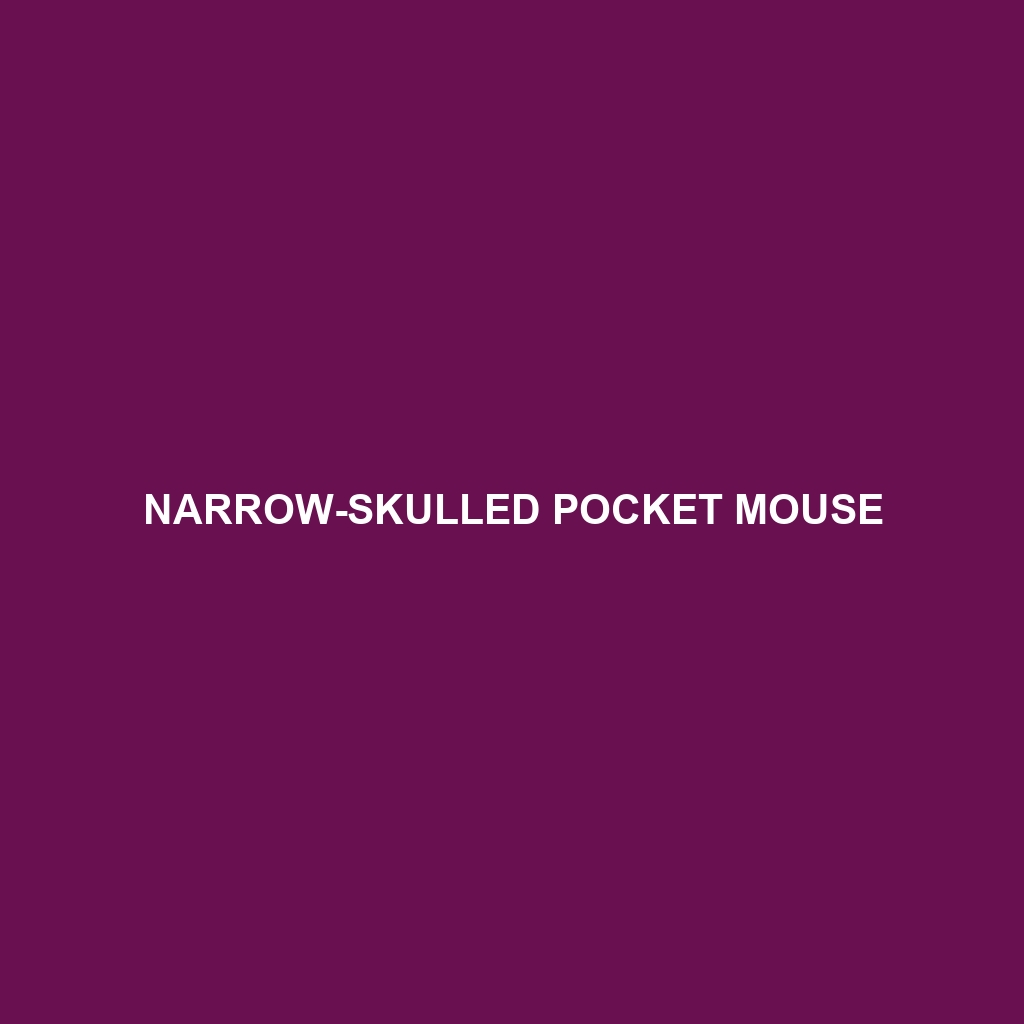Narrow-skulled Pocket Mouse
Common Name: Narrow-skulled Pocket Mouse
Scientific Name:
Habitat
The Narrow-skulled Pocket Mouse is primarily found in arid and semi-arid regions of the southwestern United States, particularly in states like Arizona and New Mexico. Its preferred habitats include sandy or loose soil areas, often near scrublands and desert grasslands. This species thrives in environments that offer plenty of cover and are conducive to burrowing, as it relies on such habitats for foraging and nesting.
Physical Characteristics
The Narrow-skulled Pocket Mouse typically measures between 8 to 10 inches in total length, including its long tail. Its fur is generally light brown to gray, with a lighter underbelly. A distinctive feature is its relatively narrow skull, which contributes to its unique name. The large, fur-lined cheek pouches are particularly noteworthy, as they allow the mouse to transport food back to its burrow. Additionally, its large ears and long hind legs make it well-adapted for a life of agility and quick escapes from predators.
Behavior
This species exhibits nocturnal behavior, primarily foraging for food during the night when temperatures are cooler. Narrow-skulled Pocket Mice are known for their extensive burrowing habits, creating intricate tunnel systems that serve as homes and protection from predators. They possess a keen sense of smell, which they use to locate seeds and other food sources effectively. Social interactions are minimal, as these mice are solitary animals, although they may share burrows during particularly harsh weather conditions.
Diet
The diet of the Narrow-skulled Pocket Mouse mainly consists of various seeds, nuts, and fruits. They are particularly fond of desert plants like cacti and shrubs, which provide not just food but also hydration. Their feeding habits are crucial for seed dispersion, as they hoard food in their cheek pouches and transport it to their burrows, inadvertently planting seeds along the way.
Reproduction
Narrow-skulled Pocket Mice are known to breed during the warmer months, typically from late spring to early fall. A female can give birth to one to three litters per year, with each litter containing three to six young. Offspring are born hairless and blind, relying heavily on their mother’s care during the early weeks. Notably, these mice exhibit strong maternal instincts, with mothers creating small nests to protect their young from environmental threats.
Conservation Status
The Narrow-skulled Pocket Mouse is currently classified as a species of ‘Least Concern’ by the IUCN, indicating that it does not face immediate threats to its population. However, habitat destruction due to urban development and agriculture poses potential risks to its long-term survival. Conservation efforts are necessary to maintain its natural habitat and to monitor population dynamics effectively.
Interesting Facts
– The Narrow-skulled Pocket Mouse is an exceptional hoarder; it can store large amounts of food in its burrows, which is vital for survival during scarce times.
– This species is known for its ability to jump significant distances, an adaptation that helps it evade predators in its arid habitat.
Role in Ecosystem
As a seed disperser, the Narrow-skulled Pocket Mouse plays a vital role in maintaining the health of its ecosystem. By burying seeds, they facilitate plant growth and contribute to the diversity of desert flora. Their presence is also essential to the food web, as they serve as prey for various predators, including snakes, birds of prey, and foxes, ensuring a balanced ecological dynamics.
